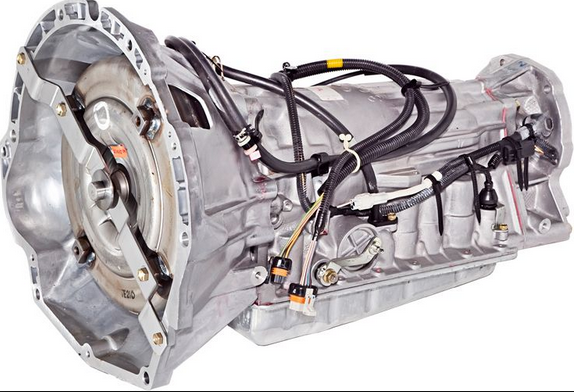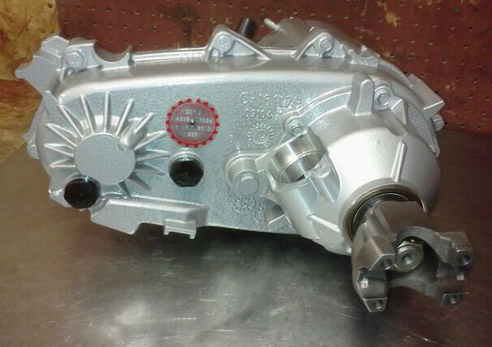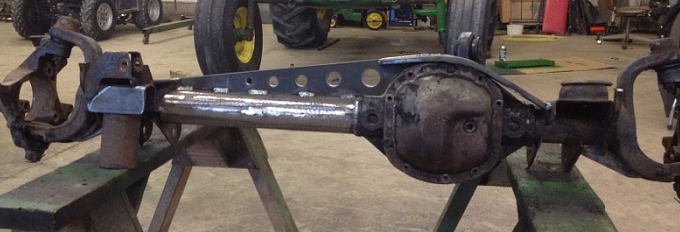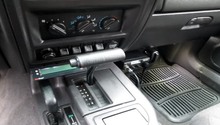Jeep Cherokee 1984-2001: Transmission and Gear Ratio Information
Matching gearing to the engine and transmission (plus the tire diameter) is a delicate dance. Make the wrong choice and your Jeep will become zero fun to drive.
This article applies to the Jeep Cherokee XJ (1984-2001).
Automaker's engineers look at the vehicle in whole to match the best gearing in the differential to the transmission gearing, the torque as well as horsepower of the engine, the tire diameter, and the weight of the vehicle. Sometimes you can out guess them, but something will have to be given up. If you choose a different ratio than what the factory used as an option, then you will get better results. Sometimes you willingly choose to give up one thing for the results you want. As far as better mileage goes, sometimes quicker gearing (numerically higher) can actually get better mileage, which is counter-intuitive.
Before we get into gearing discussions, let's establish a starting point. When it is said that someone has got really quick gearing, it actually means that they are numerically higher (4.56:1 as opposed to 3.00:1). So it takes around 4 1/2 revolutions of the engine to turn the axle one time. This is different than three engine revolutions to turn the axle once. The less RPMs (revolutions per minute) the engine turns, the better the mileage, within reason. Gear ratios move the engine into different horsepower and torque ranges. The 2.56 gears would keep the engine low in the RPM range, which means it turns less. But in the case of a Jeep, the heft of it and the rest of the drivetrain will put the engine in a very inefficient RPM range, not making enough horsepower or torque to perform well. I hope this doesn't make gear ratios even harder to understand.
Component Breakdown
Automatic Transmission
Jeep used the 30RH 3-speed automatic with the 2.5L I4 engine from 1994 through 2000, and the Aisin AW4 4-speed automatic, electronically controlled with the 4.0 I6 from 1988 to 2001. They are good transmissions, as long as you keep them cool and maintained.

Manual Transmission
An AX5 5-speed manual was used with 2.8L V6 and 2.5L I4 in the 87+. Because of shortages of the AX5, a T4 or a T5 may have been used. The AX15 5-speed manual by Aisin was used with 4.0L I6 engines. New Venture supplied the NV3550 5-speed manual and was used in 2000 to 2001 SE models with 4.0L I6 engines.

Transfer Case
The transfer case is aluminum with a chain drive. It has neutral and low range. The New Process or New Venture NP231 is a "Command-Trac" part-time only with 2.72:1 ratio low range used 1987 to 2001. The NP242 "Selec-Trac" part-time or full-time with 2.72:1 ratio low range was used from 1997 to 2001.

Axles
Gearing choices were 3.07 used with 4.0L engine and manual transmission. The 3.55 was used with 4.0L engine with an automatic. The 3.73 was found in some XJs with the towing package. The 4.10 was used with 2.5L engine and older XJs with the "Off-Highway Vehicle" package.
Scheduled Maintenance
Regular scheduled maintenance is very important to the longevity of any of these pieces. Meet or beat the deadlines in the owner's manual using the suggested fluid types.
Common Questions
If I switch to 32 or 35-inch tires, should I change the drive gears?
Changing tire diameter will certainly change the effective ratio to a higher one. To get it back to the feel as it did, it has been found that with 3.73 is good for 31" tires, 4.10 for 33"; 4.56 for 35"; and 4.88 for 37". Those are about the ratios that would put you close to stock ratios again.
If I change to lower gears, will gas mileage suffer?
Like stated above, if you change to larger tires and put the engine in a poor horsepower/torque spot, you can actually gain mileage with somewhat lower gears.
What ratio is good for towing?
With everything being equal, lower gears are better for towing. With them, you will move the engine RPMs up to the range where more power is available, making it easier to tow.
What is a posi or locker rear end?
A posi-track differential keeps the wheels on that axle spinning together. That way you maximize traction, which is better than only one wheel getting power. When you turn a corner, the clutches let the outside wheel turn faster so it does not spin.
A locker actually locks the wheels together so they always spin together. This can be a real advantage if a wheel comes off the ground.
Common Issues
The AW4 Automatic Can Run Hot
Your transmission needs to stay at a good temperature to last; 210 degrees is good, but 260 may not be. Use a good quality aftermarket transmission cooler to keep it cool and make it last.
My Buddy Bent His Axle. What Can I Do to Prevent That?
You can switch to an aftermarket set of axles, or reinforce the ones you have. This is pretty drastic, but very heavy duty.

Related Discussions
- Regear - CherokeeForum.com
- Dana 30 Sleeved and Trussed - CherokeeForum.com
- How to Identify Your Transmission - CherokeeForum.com
- 5-Speed Auto Trans on XJ - CherokeeForum.com






